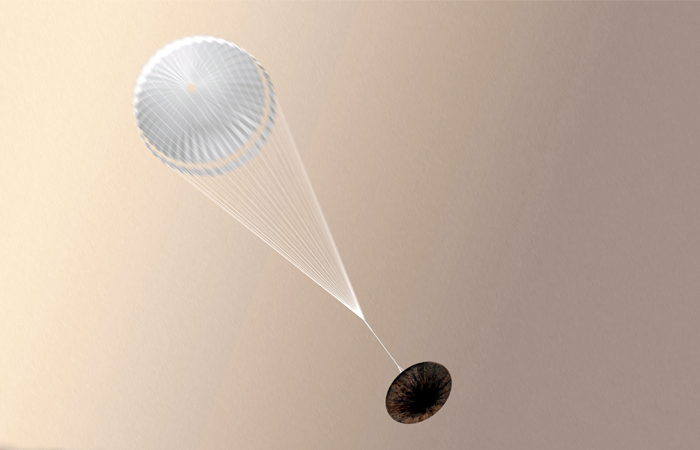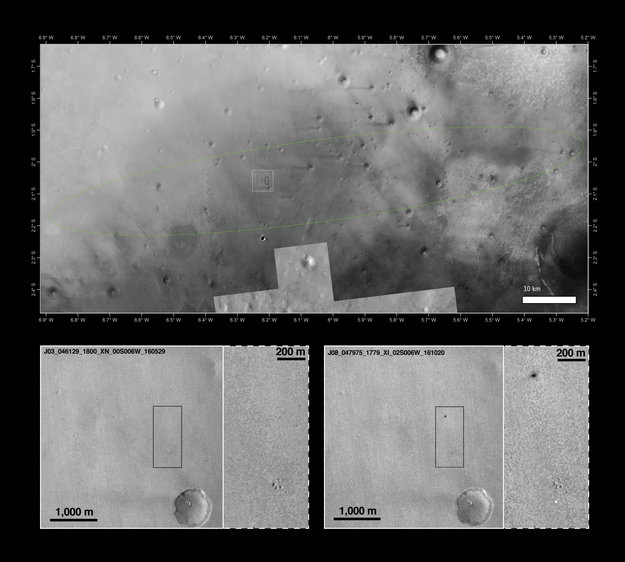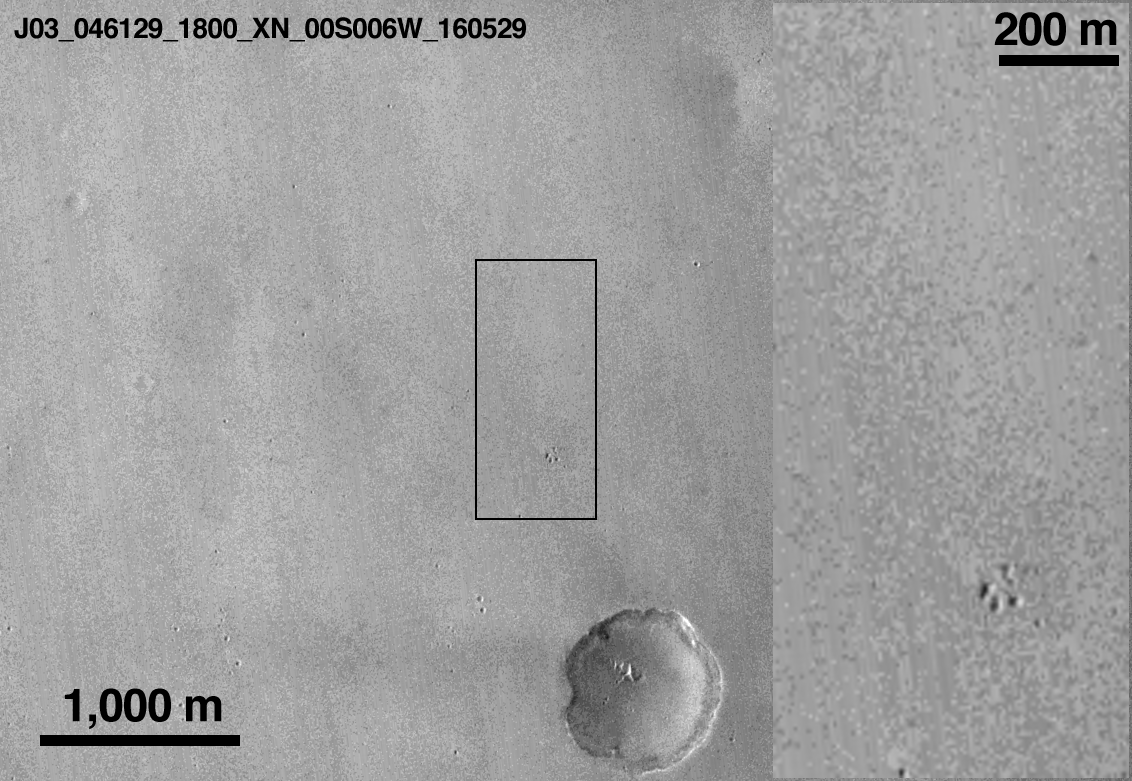Mars Reconnaissance Orbiter helped locate the fall of the Schiaparelli probe

On October 21, NASA reported that they had managed to find the place where the Schiaparelli probe fell to the surface of Mars. This was done using photos from the Mars Reconnaissance Orbiter (MRO) Mars orbiter. In the MRO photographs, it was possible to find the place where the probe fell. On October 19, radio communication was lost with Schiaparelli.
The probe entered October 19 in the atmosphere of Mars and began a planned decline. According to specialists, the device was supposed to reach the surface of Mars 6 minutes after entering the atmosphere. Unfortunately, the connection with him was lost about 50 seconds before landing. The telemetry data recorded by the parent module Trace Gas Orbiter is now being analyzed by scientists to find out the reasons that led to the failure.
Immediately after the signal was lost, European and Russian experts decided to wait a while, refusing to recognize the device’s failure. Only on October 21, the probe was recognized as lost, saying that it had crashed on the surface of Mars. Although before this, representatives of ESA called the mission successful, but this success was overshadowed by the loss of the probe, which, by the way, worked out the landing procedure that will be used for the future ExoMars 2020 mission.
')
Schiaparelli was not photographed by a HiRiSE high resolution camera, but by a CTX low resolution camera. The pictures were taken on October 20, as part of the regular photographing of the surface of the red planet. In May, the same area of the surface was already photographed using STH. The current images, according to the plan, should have been compared with previous ones in order to track the presence of seasonal changes on Mars.
The pictures are visible two spots. One of them is probably the 12-meter parachute, which was used for the second stage of the Schiaparelli descent. The parachute should have been thrown away immediately after the first stage, accompanied by heating (the equipment was protected from heat by a thermal shield). At the final stage, when the fall rate dropped to 250 km / h, nine probe engines were supposed to turn on, with which the device, according to the plan, made a soft landing.
Another object detected is a black dot located near the parachute dome. According to experts, its size is 15 * 40 meters, and it is located a kilometer from the parachute. This is probably the impact crater from the unit itself.

According to preliminary data, Schiaparelli fell from a height of 2 to 4 km above the surface of Mars. The fall rate was much higher than the calculated, and significantly exceeded 250-300 km / h. Perhaps the site found in the photograph is a consequence of an explosion from the impact of a probe on the surface of Mars. The fact is that during the fall, the engines of the apparatus did not work, and the fuel tanks remained full. When falling, fuel could explode from impact, leaving behind the impact crater.
A more detailed study of this region will be conducted using a high-resolution camera HiRiSE. This will happen next week. The images obtained by the second camera should help scientists determine the location of the fall of the front thermal shield, which is separated from the probe at high altitude.
Since the descent, or rather, the fall of the apparatus was monitored from three points at once, the scientists hope to restore the events with great accuracy by processing this information. The reason for the failure of the probe equipment is still in question. The location of the dark marks shows that the Schiaparelli deviated by about 5.4 km to the west from the originally planned touchdown point, although within the landing ellipse of 100 * 15 km in size.

The project team continues to decode the probe landing data received from the ExoMars TGO parent module. The obtained data will be used to correct measurements made using GMRT (Giant Metrewave Radio Telescope). This is an experimental telescope located near Poon, India. The Mars Express orbiter data from the ESA is also used in the investigation of the situation.
Most of the data, extremely important for the investigation, the scientists received through the module TGO. The project team is working on analyzing the situation around the clock.
The orbital module "ExoMars" TGO is now in orbit 101,000 km x 3691 km with an orbit around Mars of 4.2 days. This orbit is calculated. The device works without problems and failures. Currently, scientific instruments on board the module are gradually being calibrated and will begin collecting scientific information in November 2016. In March 2017, the system will perform several maneuvers and then go into a 44-km orbit.
After that, TGO will start the implementation of the main scientific mission to study the atmosphere of Mars. This, scientists hope, will help detect traces of life on Mars under its surface. The station will also be used as a communications hub for the ExoMars 2020 rover and other ground vehicles.
Source: https://habr.com/ru/post/398569/
All Articles